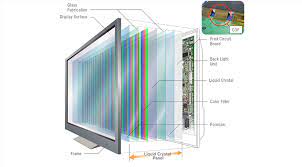Liquid-crystal display is a flat-panel display or other electronically modulate optical device that uses the light-modulating properties of liquid crystals combined with polarizers. Liquid crystals do not emit light directly, instead using a backlight or reflector to produce images in color or monochrome.
LCDs are available to display arbitrary images (as in a general-purpose computer display) or fixed images with low information content, that is display or hidden. For instance: preset words, digits, and seven-segment displays, as in a digital clock, are all good examples of devices with these displays. They use the same basic technology, excluding the arbitrary images are made from a matrix of small pixels, other displays have large elements. LCDs can either be normally on (positive) or off (negative), depending on the polarizer arrangement.
Is LCD or LED better?
When it comes to picture quality, full-array LED monitors are almost always superior to LCD monitors. But bear in mind that only full-array LEDs are superior. Edge-lit LEDs may actually be inferior to LCD monitors.
What are the use of LCDs?
Liquid-crystal display are commonly use for portable electronic games, as viewfinders for digital cameras and camcorders, in video projection systems, for electronic billboards, as monitors for computers, and in flat-panel televisions.
LCD can repaired or not?
LCD monitors have many complex components, so it’s not unusual for them to encounter problems. Most issues short of serious physical damage can repaired at home.
Why OLED is better ?
An OLED television can reduce its energy consumption by reducing brightness which reduces the quality of the picture. LCD televisions are more energy efficient. Their energy consumption can be reduce by reducing the brightness of the backlight.
Is LCD bad for eyes?
Scientists from the University Complutense of Madrid (UCM) announced in Boston Monday that LED light, including that emitted by digital screens, may be permanently damaging to your eyes, potentially leading to retina damage and vision loss.
Do they still make LCD TVs?
If you can’t justify spending big on an OLED or QLED TV, the good news is that all major TV brands are selling plenty of LCD-LED TVs. LCD (liquid crystal display) and LED (light-emitting diode) TVs are about competing concepts, but they refers to identical display technology.
Use of polarizer in LCD?
The fundamental purpose of the polarized filter layer on LCDs is to create a clearer, brighter image. Without a polarized layer, the light created back the LCD’s backlight. Which all LCDs have — won’t be visible to the user.
How can we make LCD panels ?
LCD screens are manufacture by assembling a sandwich of two thin sheets of glass. Then you drop tiny amounts of liquid crystal material into the cells on the first sheet. And glue the two sheets together.
What causes LCD damage?
LCD screen is too sensitive to mechanical shocks and heat. Since the pressure may squeeze the fluid present in between the plates. Which can cause its permanent damage. Excessive heat can change the physical properties of the liquid. So some part of the screen may damage and appear as black spots or segments.





